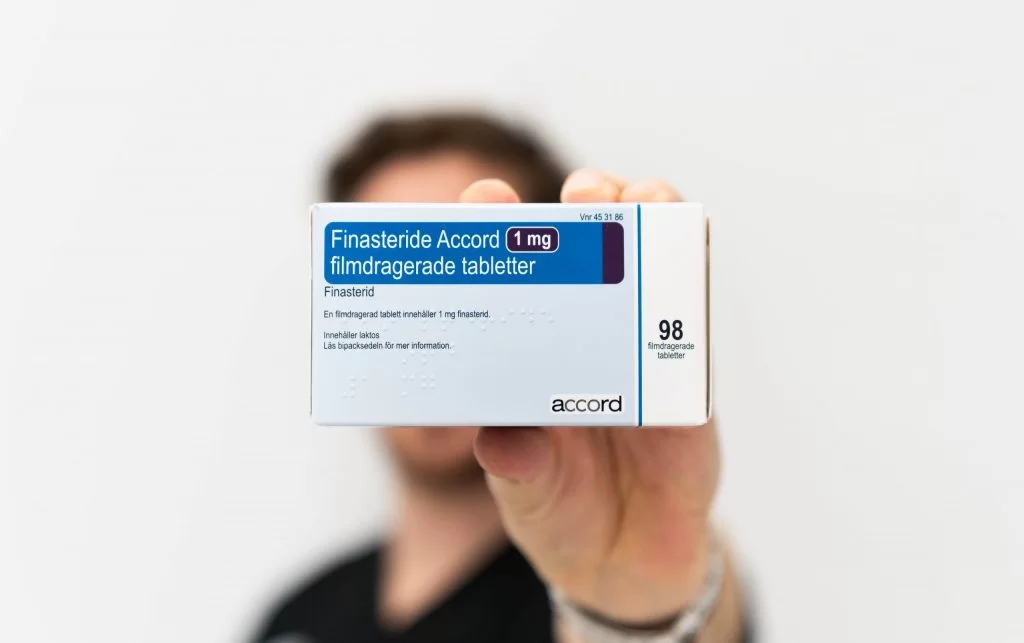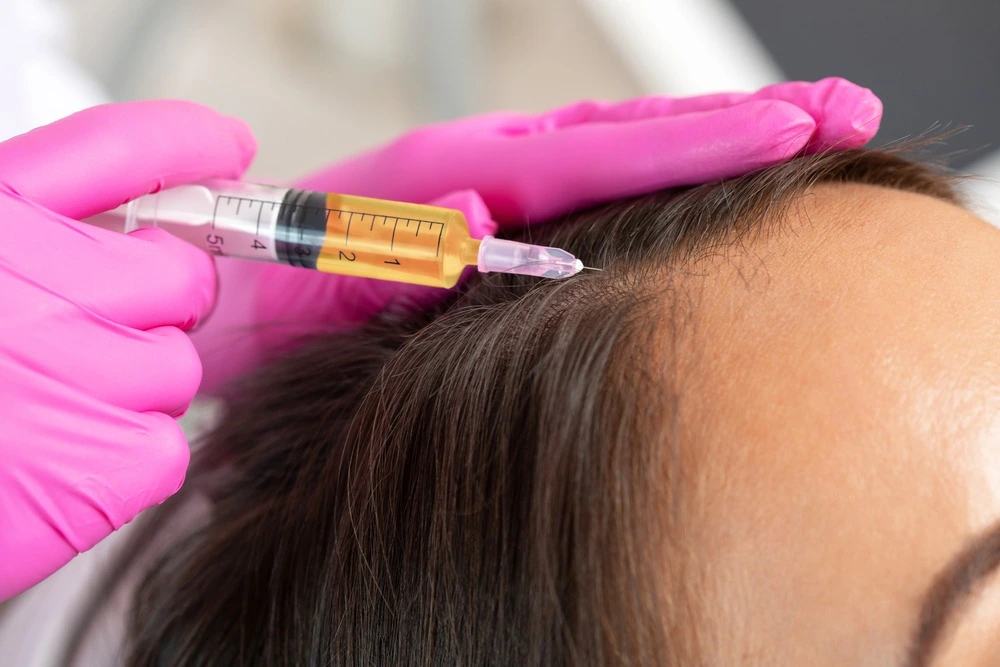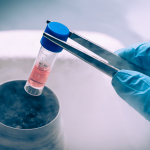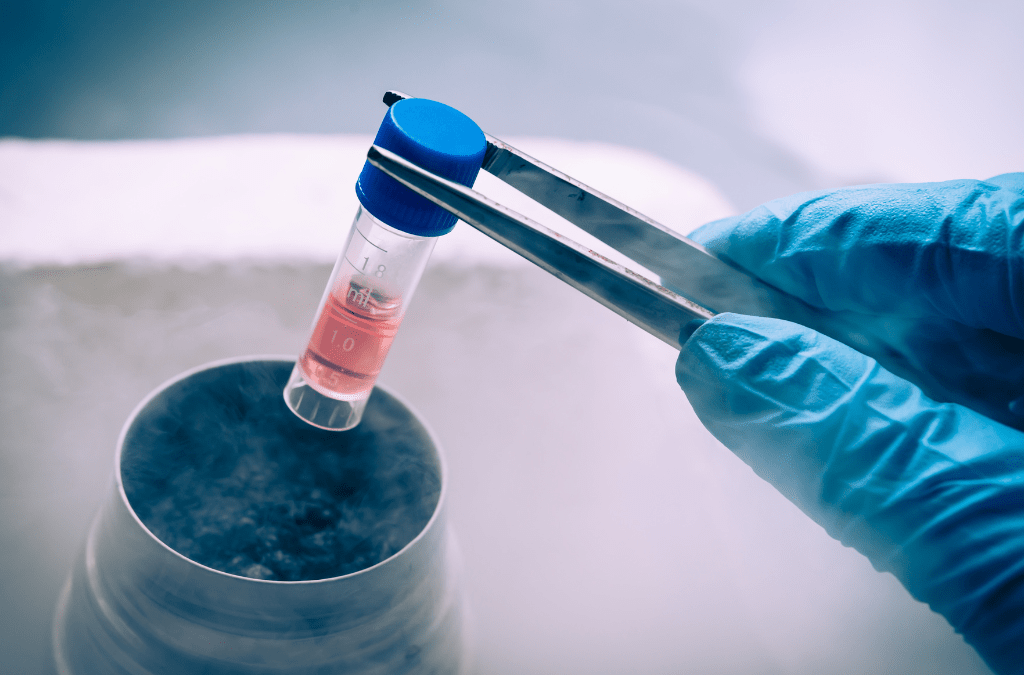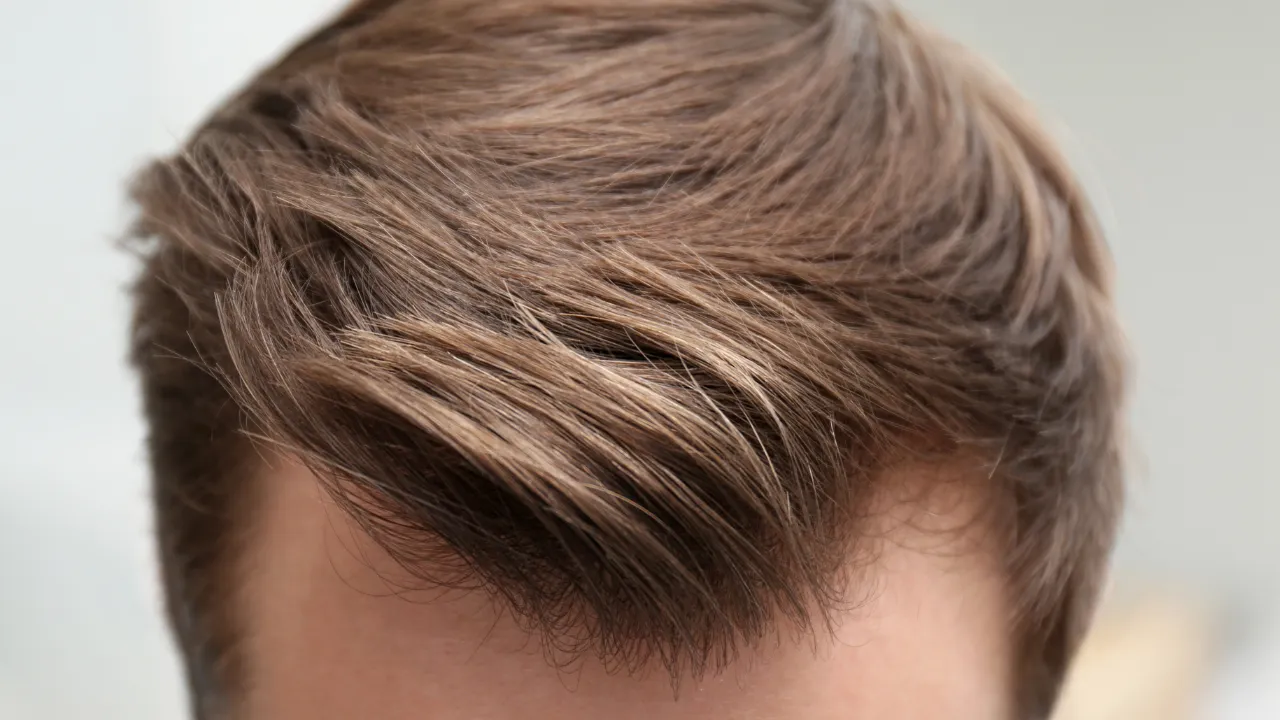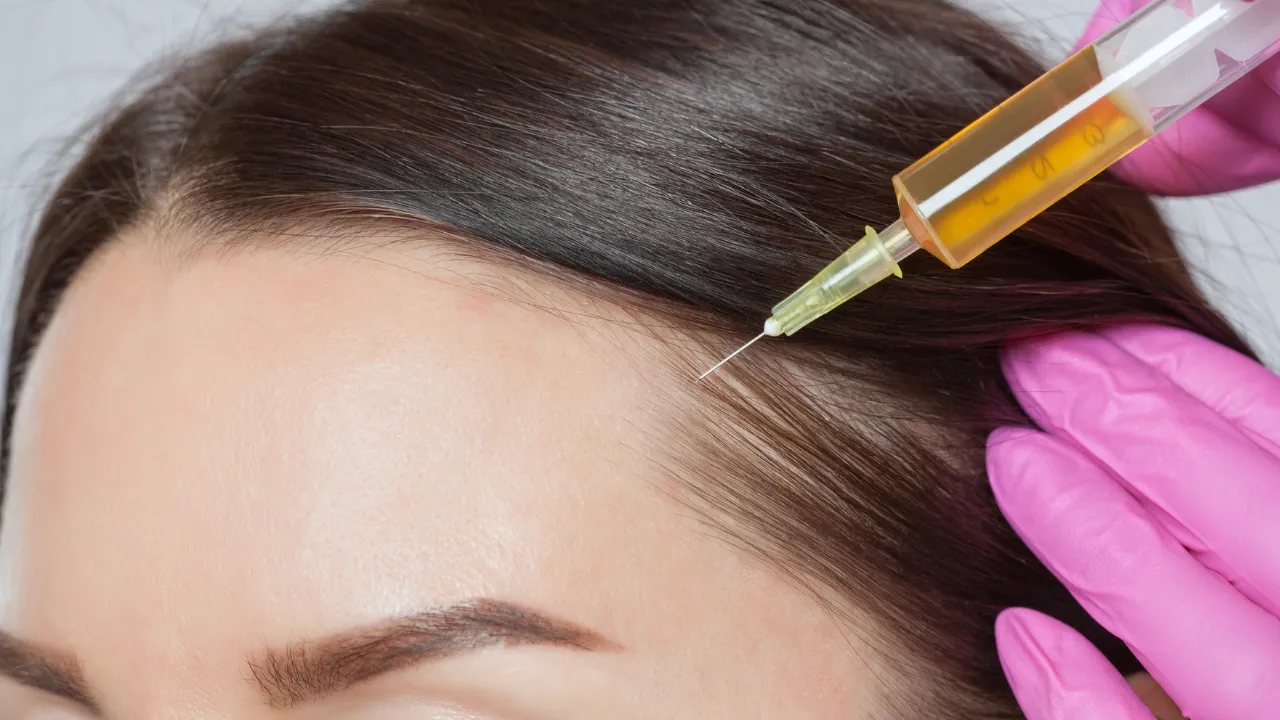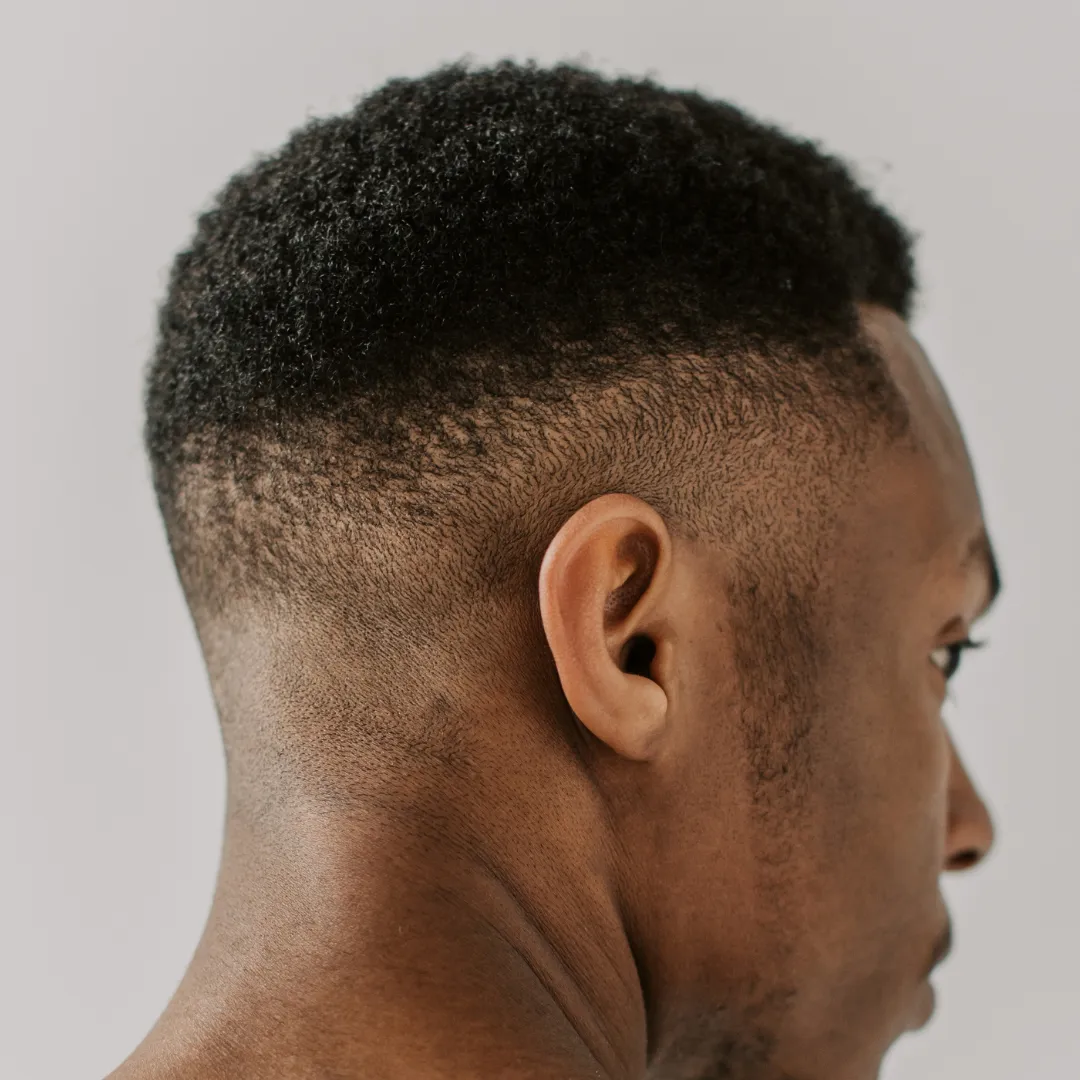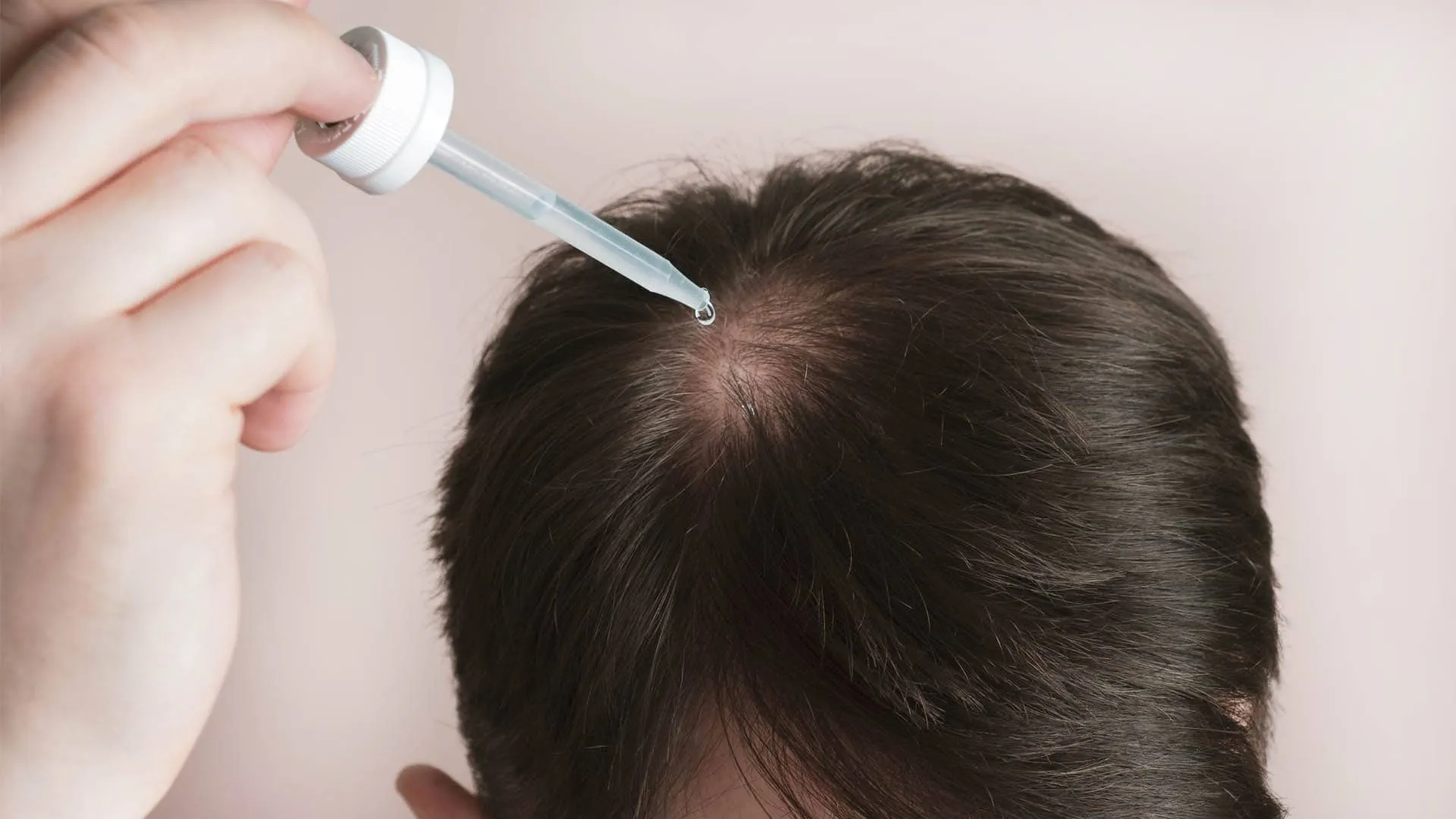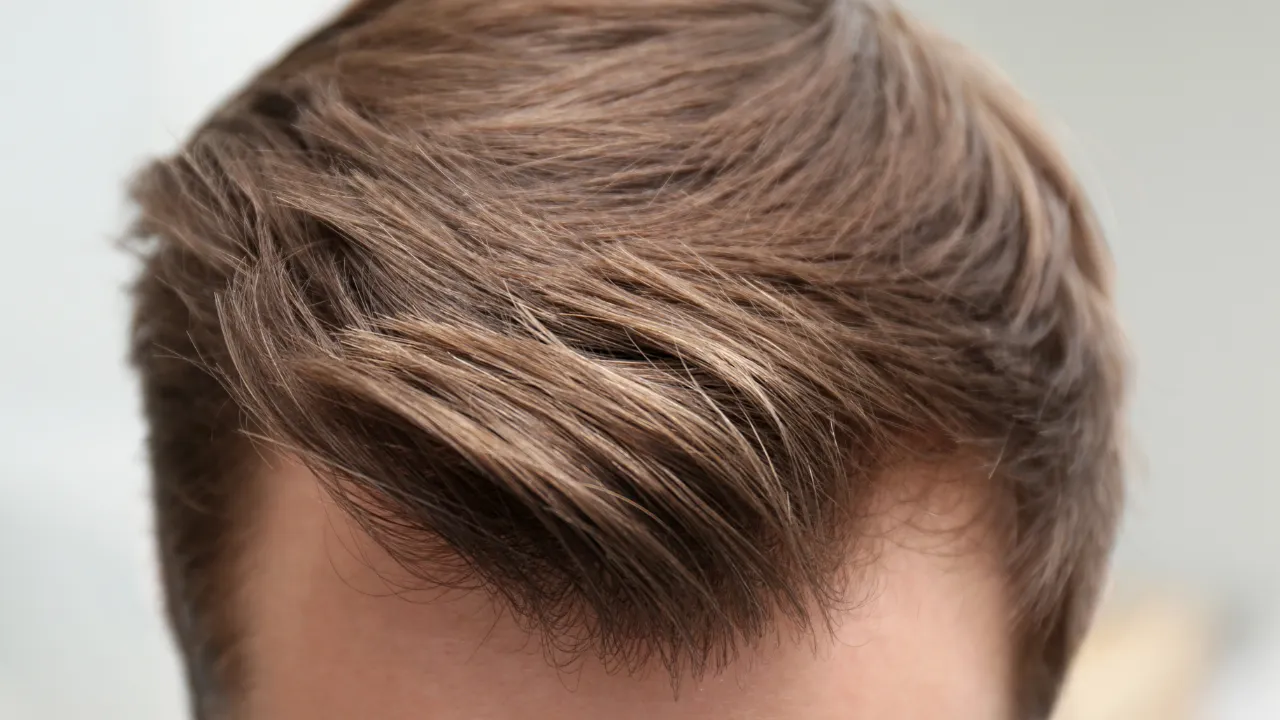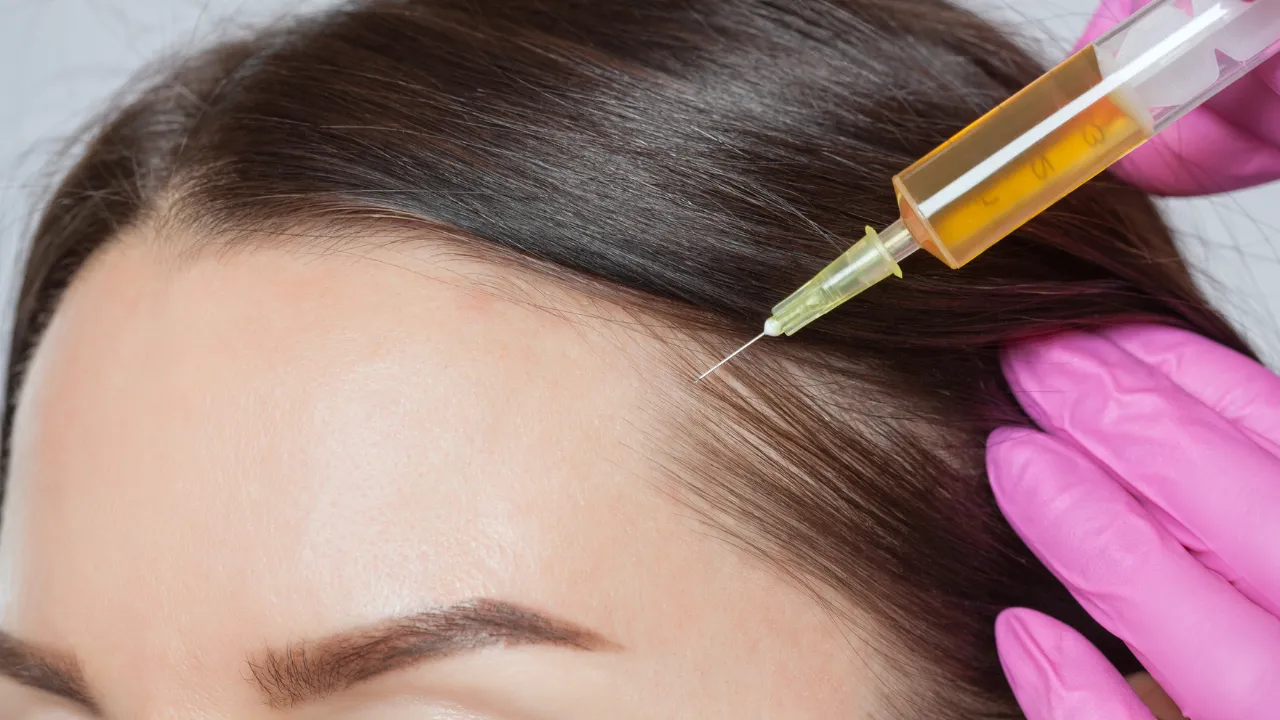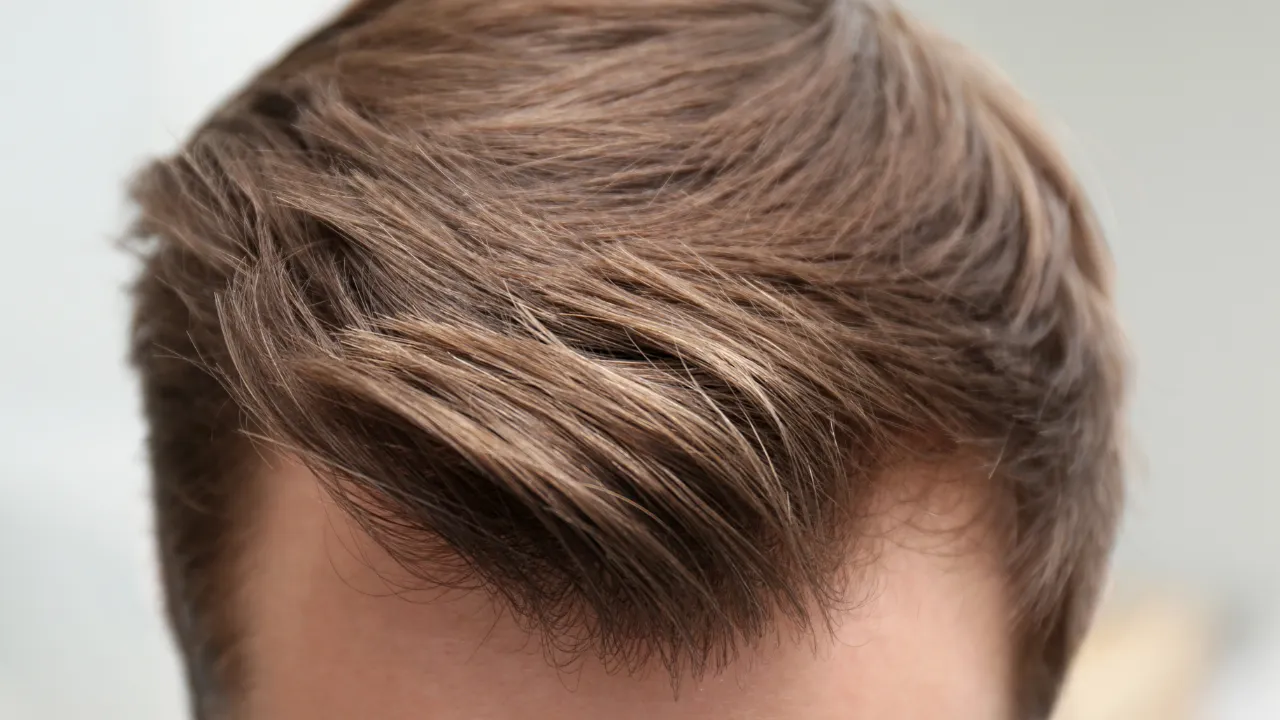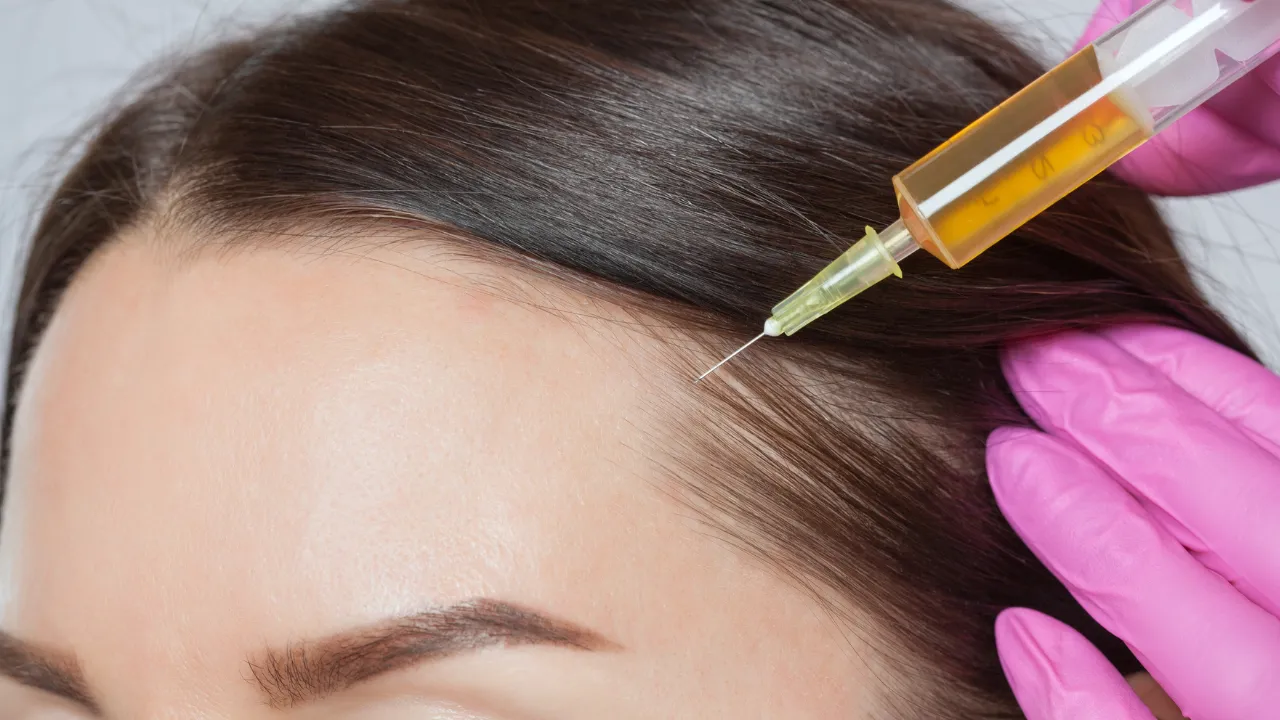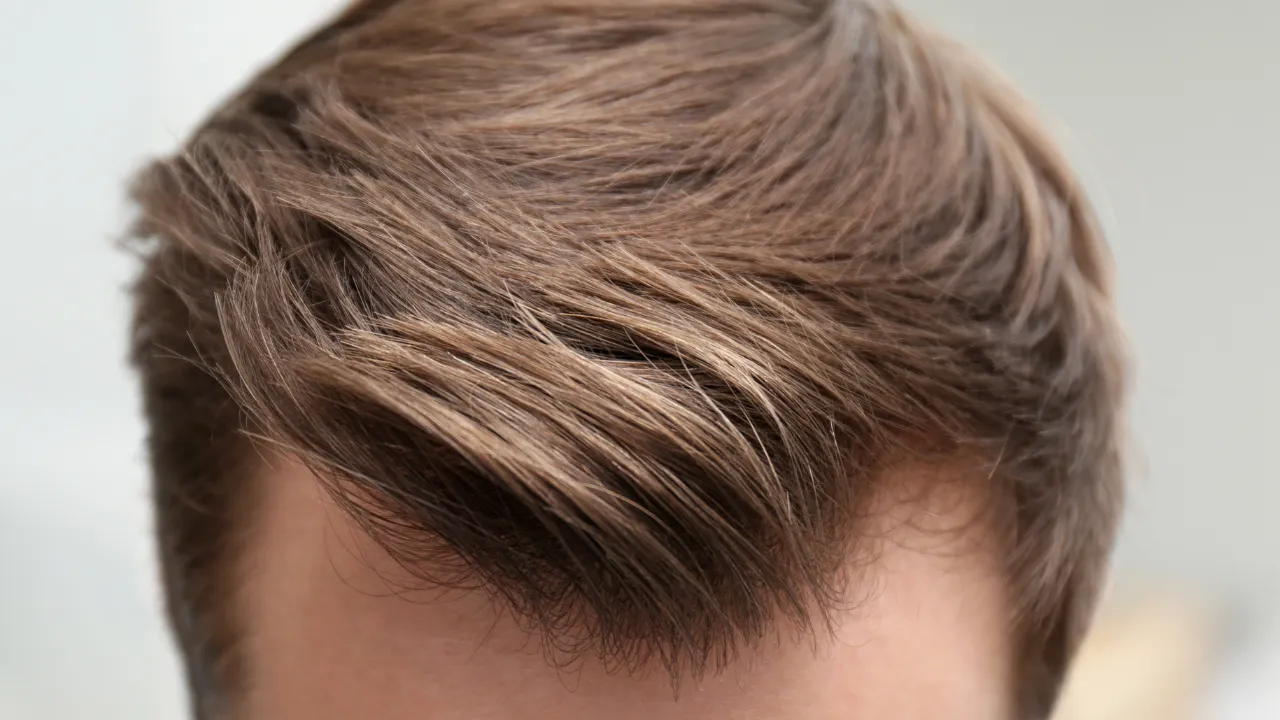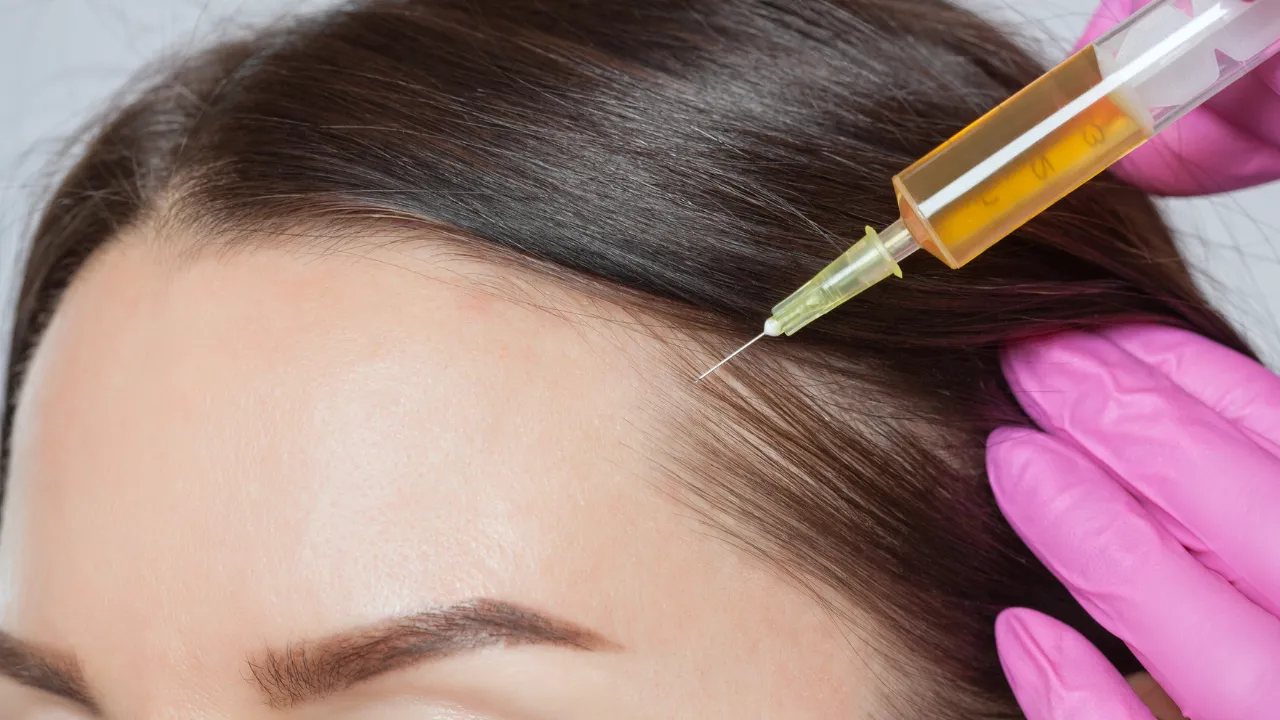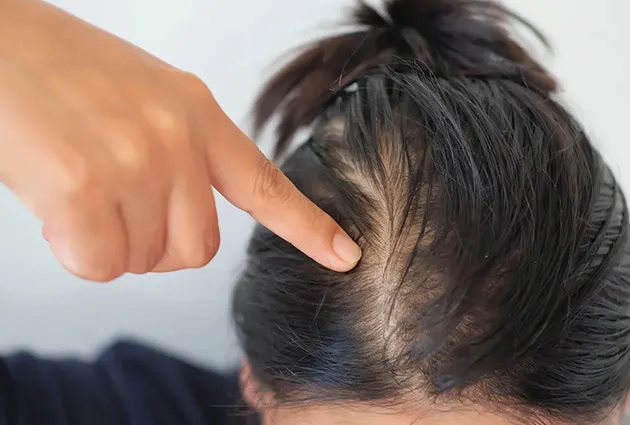Table of Contents
ToggleFinasteride side effects are rare. Studies show that fewer than 2% of men have mild issues like lower sex drive or short-term sexual changes. Most men take finasteride without problems, and when side effects happen, they usually go away after stopping or changing the dose.
Finasteride is a proven medicine for hair growth and male pattern hair loss. At Kopelman Hair, our team explains that with proper medical care, finasteride is a safe and effective hair loss treatment. Knowing how finasteride works and what side effects to expect helps patients feel more confident about their results.
Key Takeaways
- Most men (about 98%) experience no significant finasteride side effects, and when they do occur, they are usually mild and temporary.
- Clinical studies show that fewer than 2% of users report mild sexual side effects, such as reduced libido or ejaculation disorder, during the first year of treatment.
- Finasteride works by lowering DHT levels, which promotes hair growth but can also influence hormonal balance in other parts of the body.
- Regular monitoring by a qualified specialist and healthy lifestyle habits help reduce potential side effects and improve tolerance.
- Under the care of Dr. Kopelman at Kopelman Hair, finasteride remains a safe, effective, and medically supervised option for treating hair loss.
What Are the Side Effects of Finasteride
Finasteride works by lowering dihydrotestosterone (DHT), the hormone responsible for shrinking hair follicles in male pattern hair loss. While effective in promoting hair growth, it can occasionally cause mild adverse effects in a small number of users.
Common Side Effects in Men
Most side effects of finasteride in men are mild and temporary. Common reports include:
- Decreased libido
- Mild ejaculation disorder
- Difficulty achieving or maintaining an erection
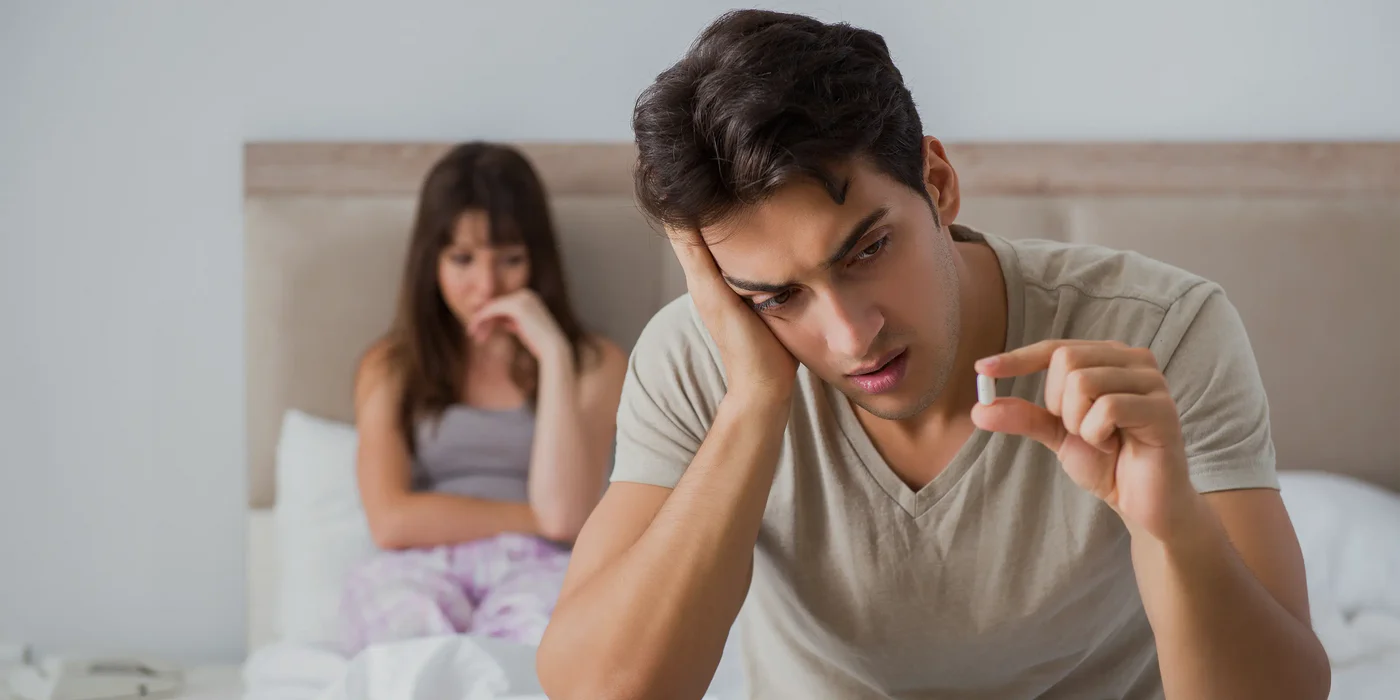
These symptoms usually appear early in treatment and fade as the body adjusts.
Serious or Rare Side Effects
Serious side effects are uncommon but may include:
- Persistent sexual dysfunction
- Breast tenderness or nipple discharge
- Testicular pain
- Allergic reactions
Patients should seek medical guidance if these occur.
Common vs. Rare Side Effects Table
This overview helps readers identify which side effects are more likely and which are rare adverse effects that require medical attention.
Topical vs. Oral Finasteride Side Effects
Topical finasteride reduces systemic absorption, which may lower the risk of side effects, while oral finasteride affects DHT throughout the body. Both forms are used for treating hair loss, though topical solutions may be preferred by men seeking reduced hormonal impact.
Can Finasteride Cause Night Sweats or Diarrhea?
Such reactions are extremely rare. If they persist or worsen, consult a healthcare professional to rule out unrelated causes.
Why Do Finasteride Side Effects Occur?
Finasteride works by blocking the enzyme 5-alpha-reductase, which converts testosterone to DHT. This action helps prevent hair loss and is also beneficial in managing benign prostatic hyperplasia (BPH), or enlarged prostate, by reducing prostate size. However, hormonal adjustments may temporarily affect mood or sexual function.
Most side effects arise during this adaptation period and gradually subside as hormone levels stabilize. Proper medical supervision ensures that the treatment remains safe and effective for both hair loss treatment and prostate health.
How Often Finasteride Side Effects Occur
Clinical research shows that 1.8% of men report decreased libido and 1.3% experience erectile difficulties during the first year of treatment. Some also note mild changes in ejaculation, but these are typically short-lived. These findings confirm that finasteride side effects are uncommon and often reversible.
How Long Do Finasteride Side Effects Last?
Temporary side effects usually resolve within a few weeks or months after stopping treatment. Many men see improvement even while continuing therapy as their bodies adjust.
A small group of patients report persistent symptoms, known as post-finasteride syndrome, though it remains rare. Continued supervision by a qualified physician helps ensure safe recovery and positive results.
Factors That Affect Frequency
- Dosage: Higher doses may increase risk.
- Duration: Long-term unsupervised use can cause complications.
- Genetics and Health: Hormonal sensitivity and general wellness play roles in response.
Is It Possible to Have No Side Effects?
Yes, most men tolerate finasteride well and experience no noticeable reactions. Regular consultations help maintain safe and effective results.
Some patients feel anxious about potential side effects at first, but confidence increases once results become visible and the medication proves well-tolerated.
How to Reduce the Side Effects of Finasteride
Medical Guidance and Dosage Adjustments
Doctors may recommend lowering the dose or switching to topical application if mild side effects occur. Monitoring hormone levels ensures that hair loss treatment remains both safe and effective. Dr. Kopelman, with over 40 years of experience, stresses that personalized medical oversight prevents unnecessary complications.
Lifestyle Changes to Minimize Risk
- Eat a nutrient-rich diet to support hormonal balance.
- Avoid excessive alcohol and smoking.
- Stay active to promote blood flow and hormonal stability.
- Manage stress through rest and relaxation.
These steps can help minimize discomfort while improving overall results.
Finasteride Use in Women: Key Safety Concerns
Finasteride is not suitable for most women, especially those who are pregnant or may become pregnant, as it can cause birth defects in male fetuses. In some rare cases, postmenopausal women may use low doses under close medical supervision.
Women should never handle crushed or broken tablets because the medication can be absorbed through the skin. Medical consultation is always required before considering any treatment options involving finasteride.
How Long-Term Use Affects Results and Safety
Long-term use of finasteride helps sustain hair growth and prevent further hair thinning in men with male pattern hair loss. Studies show that patients using finasteride for ten years or more experience stable results without higher risks of adverse reactions.
Finasteride also supports prostate health by helping to manage benign prostatic hyperplasia (BPH), making it a valuable medication for both hair and prostate-related concerns. Under the guidance of Dr. Kopelman, finasteride remains one of the most effective treatment options available today.
Is Finasteride Worth the Risk?
For most men, finasteride offers significant benefits for both treating hair loss and improving hair density. Its proven ability to slow shedding and enhance hair growth outweighs the small chance of mild adverse effects.
Most side effects, if they occur, are reversible after stopping the medication. At Kopelman Hair, patients receive personalized evaluations to ensure optimal results and safe treatment plans tailored to individual goals.
When to Seek Medical or Mental Health Advice
Patients should contact a healthcare provider if they experience persistent physical or emotional side effects. Call your doctor if you notice:
- Breast tenderness or swelling
- Mood changes lasting longer than two weeks
- Ongoing erectile or ejaculation disorder symptoms
Prompt consultation helps manage symptoms early and ensures long-term treatment safety.
Finasteride remains a trusted, scientifically supported solution for hair loss treatment and male pattern hair loss. It not only promotes hair growth but also supports prostate health in men with benign prostatic hyperplasia (BPH).
By understanding how finasteride works, patients can balance the benefits against any adverse effects and make informed decisions. With expert care from Dr. Kopelman and his team at Kopelman Hair, patients achieve lasting, healthy results through safe and effective treatment options that restore confidence and well-being. Schedule a consultation today.


